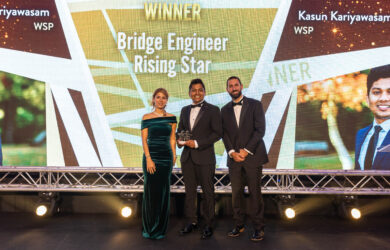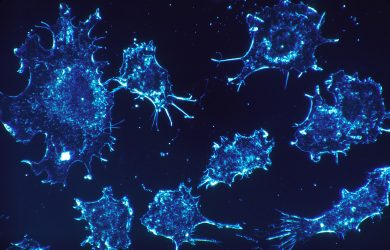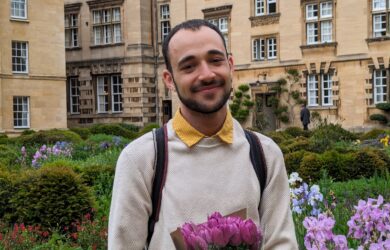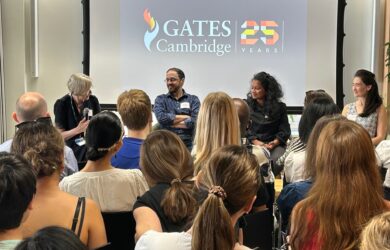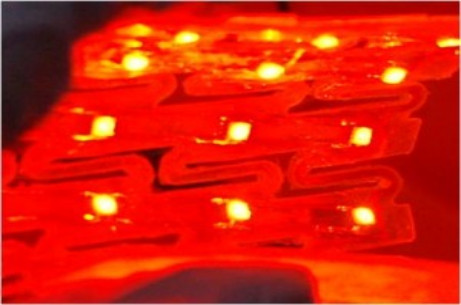
Chris Boyce is running his own business while studying for a PhD in Chemical Engineering.
Chris Boyce [2011] has two passions: his research into new energy technologies to mitigate carbon emissions and a family business which he set up just after high school.
His research, for which he is doing a PhD in Chemical Engineering, involves imaging and modelling fundamental aspects of fluidised beds to make carbon capture and sequestration easier. His aim is to make the industrial process not only cleaner but cheaper.
His business, which he set up with his parents, involves a technology which will eventually lead to the creation of flexible, stretchable and even wearable electronic devices, such as an electronic bandaid which can monitor the extent of head injuries to soldiers and athletes and relay the information to medical experts.
Chris’ dream is to marry up his two passions and market new technology which could help mitigate global warming. The reason his family are involved in his business is that his mother is a professor of engineering at MIT and his father is a mechanical engineer who has worked mainly for military engineering companies.
Chris set up Infinite Corridor Technology just after high school. He says he was always interested in using scientific ideas to make something real that could have a material impact on the world. “I wanted to make a difference,” he says. Interestingly, considering he is now a Gates Cambridge Scholar, he was influenced in part by role models such as Bill Gates.
He did not set out to start a company at 17. He was looking for something to do between high school and college. His mother had recently finished a project with a post-doc investigating what happened to substrates when you cut holes in them and compressed them. She told Chris that if he was looking for something to do, he could see what happened when you cut holes in substrates and stretched them. He learnt different computational techniques to test patterns of holes which could be cut and to model what happened when you stretched the material. He found that if particular patterns of holes were cut in non-stretchable materials they could be stretched.
He could see that this could be used for creating flexible electronics. “You can stretch a circuit board without any force being felt on the electrical components, if you put the right holes in it,” he says. He decided to look into whether he could commercialise the research by setting up a company. His parents helped him. “I would not have been able to do it on my own,” he says.
In the first summer the company developed the patterns and the initial vision. Chris then started MIT where he studied chemical engineering and didn’t have much time for the business until the following summer when the technology was further developed. At that point he noted that the US military has a programme for funding start-ups to help them with early stage development of technology which could be useful to the US military. His parents helped him draft a proposal and a few months later he learnt that the company had been awarded $100,000 to do initial research which went beyond Chris’ computational models.
Flexibility
Over the next months he worked on a prototype of a stretched circuit board with LED lights and registered the company. He also contacted the major industry companies making circuit boards to see how he could get the company’s invention manufactured.
Now, as well as doing a PhD at Cambridge, Chris is working with companies that need to make their current electronics more flexible or stretchable so they can be worn in some way or fit into a more compact area.
The company has several contracts. “One of the coolest things about it is that it can be applied to so many areas,” says Chris. One project is with a group of researchers at Stanford working on micro electrode arrays which can send electronic signals to heart cells. The ultimate aim is to stimulate early stage heart cells which might be able to repair the hearts of heart attack patients.
One project is based on developing a wrist-worn electronic control board that interfaces with a flexible display for communication purposes. . Another is a type of electronic bandaid which can be applied to head injuries and monitor the impact, for instance, of a blast, and relay that information wirelessly back to base. Chris says this could also be used in sports prone to head injury, such as American football.
Another project is looking at innovative ways to use this technology in the lighting industry. Chris emphasises that there is still a long way to go with all these projects before they will lead to any big pay-off, but he says the way things are progressing is “very promising”. The head monitor project is probably the most near to completion, but even that could take a few years.
Research
Chris says both Cambridge and MIT have a strong entrepreneurial side which has helped him with his business, but despite his success and the knowledge he has built up about running a business, he is more passionate about his studies. He says his interest in alternative energy dates from before he started up the business. He hopes eventually to be able to combine his entrepreneurial flair and his research and set up an alternative energy company.
He says there has been a lot of research on combustion techniques and on carbon capture and sequestration.
His research is looking at the fundamental physics of a certain type of chemical reactor with novel physical properties. It can capture the carbon dioxide that comes out of power plants, one of the major factors in global warming. “I am looking at how to operate this. I need to understand the fundamental physics of it so I can optimise the process and create electricity from burning fuels which is more energy efficient and cost effective. The goal is cleaner, cheaper energy,” he says.








